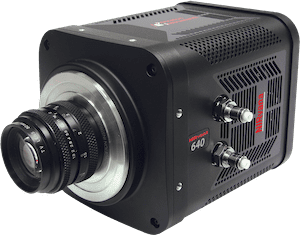Ardemis Boghossian
Chemistry of Materials
Introduction
Confocal microscopes are widely used in physical and in particular life sciences as they offer higher resolution as standard widefield imaging. If high acquisition speeds and frame rates need to be achieved typically scanning confocal systems are used that permit to scan a field of view with an excitation light source with kHz rates

The research group of Ardemis Boghossian from Lausanne, Switzerland has just published a report about their research in collaboration with Nikon and Crest Optics to transfer scanning disc confocal microscopy to the SWIR/NIR-II wavelength range using a Princeton Instruments NIRvana-ST camera for detection.
SWIR imaging is increasingly established in life science due to low absorption and scattering of tissue in this wavelength band. The researchers show with several application examples that the new setup increases the spatial resolution while still allowing for image acquisition at high frame rates. For example, carbon nanotubes can be precisely localized in chloroplasts, monitoring nanoparticle movement in solvents allows to measure diffusivities and using the high vertical resolution allows for glucose concentration measurements using nanosensors at different depth of a sample. This research lays the groundwork for establishing and expanding this technique to monitor the location and movement of nanoparticles and sensors.

